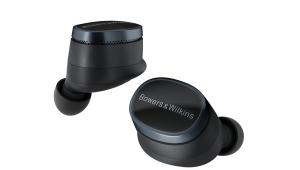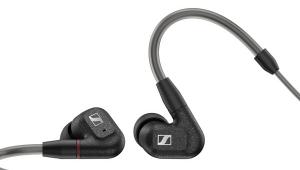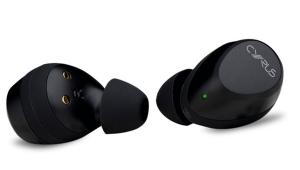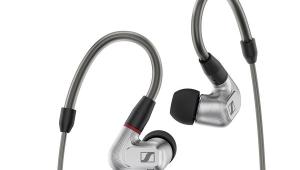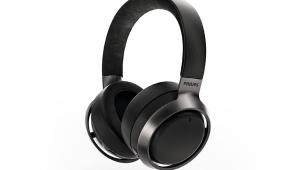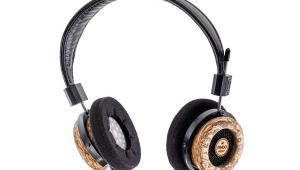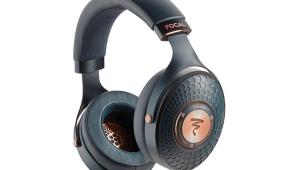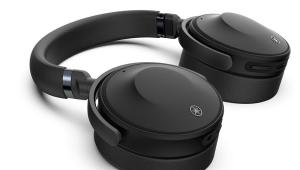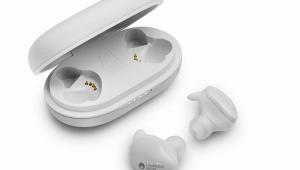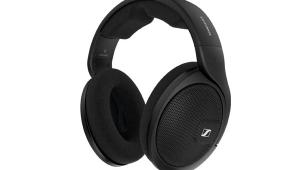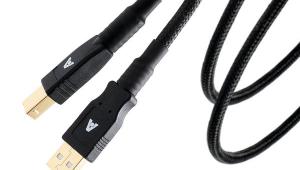T+A Solitaire P-SE
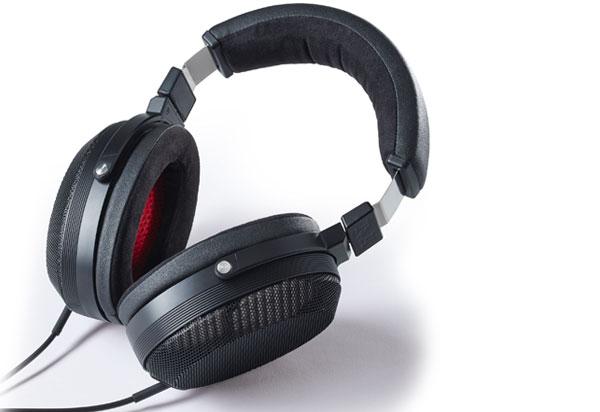
 Launched last year, T+A’s Solitaire P headphone weighs in at a hefty £5,000. As well as being exceptionally good, it does mean even ‘trickle-down’ models have the scope to be rather high-end in their own right. The Solitaire P-SE is the second model to join the range and is closely related. It is an open-back, planar magnetic that very closely matches the design of the original. To make the significant saving over the P, the biggest difference is the driver itself. The TPM2500 unit is the same size as that used in the flagship, but only has magnets on one side and the material used for the diaphragm and the process by which a conductive surface is applied has been slightly revised. The ‘Draught control system’ (effectively the air management around the driver) has thus been altered to reflect these changes.
Launched last year, T+A’s Solitaire P headphone weighs in at a hefty £5,000. As well as being exceptionally good, it does mean even ‘trickle-down’ models have the scope to be rather high-end in their own right. The Solitaire P-SE is the second model to join the range and is closely related. It is an open-back, planar magnetic that very closely matches the design of the original. To make the significant saving over the P, the biggest difference is the driver itself. The TPM2500 unit is the same size as that used in the flagship, but only has magnets on one side and the material used for the diaphragm and the process by which a conductive surface is applied has been slightly revised. The ‘Draught control system’ (effectively the air management around the driver) has thus been altered to reflect these changes.
There have also been some changes to the chassis and headband. The exquisite but extremely expensive aluminium sections of the P are now plastic. Impressively, it still feels solid and effortlessly engineered in a way that many other headphones – even when made out of metal – cannot easily match.
The Solitaire P-SE is supplied with two detachable cables, both 3m long. The first is fitted with a conventional 6.35mm jack, while the other has a 4.4mm Pentaconn balanced connector – as supported by T+A’s headphone products (XLR fitment is also available). My only slight complaint is that the storage is huge and a little fussy.
Sound quality
I’ve tested the original Solitaire P in the past and it’s notable how many of the same observations apply to both models. T+A’s implementation of a planar magnetic driver is the closest I’ve seen to achieving the ideals of the technology. Listening to the gorgeous 24-bit/96kHz Qobuz stream of Paris Jackson’s Dead Sea reveals all of the speed and fluidity of an electrostatic, but there is a heft to the underpinning bass quite unlike any electrostatic – and indeed most planar magnetic headphones – I’ve ever used. The T+A creates a space and scale that’s truly extraordinary for a headphone.
With everything afforded believable dimensions, the tonal realism and immediacy ensures it readily achieves the suspension of disbelief that can elude some rivals. The ability of the T+A to really push information in front of you and to extend the soundstage beyond the confines of the enclosures is consistently effective and not tied to the scale of the music being played. The stripped-back and intimate Mokou Mokou by Amadou and Mariam is as much of a beneficiary as the more boisterous live Shibuya 357 by Brand New Heavies. The latter recording does suggest that the Solitaire P-SE doesn’t have quite the urgency of some dynamic driver rivals, but it never sounds slow or confused.
The most impressive attribute is one shared with its bigger sibling. This is a headphone that never struggles to achieve near forensic levels of detail and with high-quality recordings it can deliver a level of performance that you would have to spend many times more on conventional box speakers to get anywhere near. It does all this while delivering poor recordings in an impressively forgiving way. It is also usefully sensitive judged by the standards of planar magnetic designs. My resident Chord Electronics Hugo TT2 (HFC 468) does a fantastic job, but the results on the end of an Astell&Kern KANN Alpha (HFC 473) – equipped with a 4.4mm headphone socket – are also extremely impressive.
Conclusion
T+A has somehow shaved as much as 40 percent off the price of the flagship P while retaining more than 60 percent of its capability. It’s still unquestionably an expensive headphone, but the sheer levels of performance on offer and the quality of the build and design means it ranks as one of the very finest headphones anywhere near the price.. ES
DETAILS
Product: T+A Solitaire P-SE
Type: Open back, over-ear planar magnetic headphone
FEATURES
● 110 x 80mm planar magnetic driver
● 3m detachable cables with 6.35mm and 4.4mm connections (XLR optional)
 |
Inside this month's issue:
Q Acoustics 3020c standmount loudspeakers, Perlisten R10s active subwoofer, Quad 33 and 303 pre/power amps, Acoustic Solid Vintage Full Exclusive turntable, newcomer Fell Audio Fell Amp and Fell Disc and lots, lots more...
|
